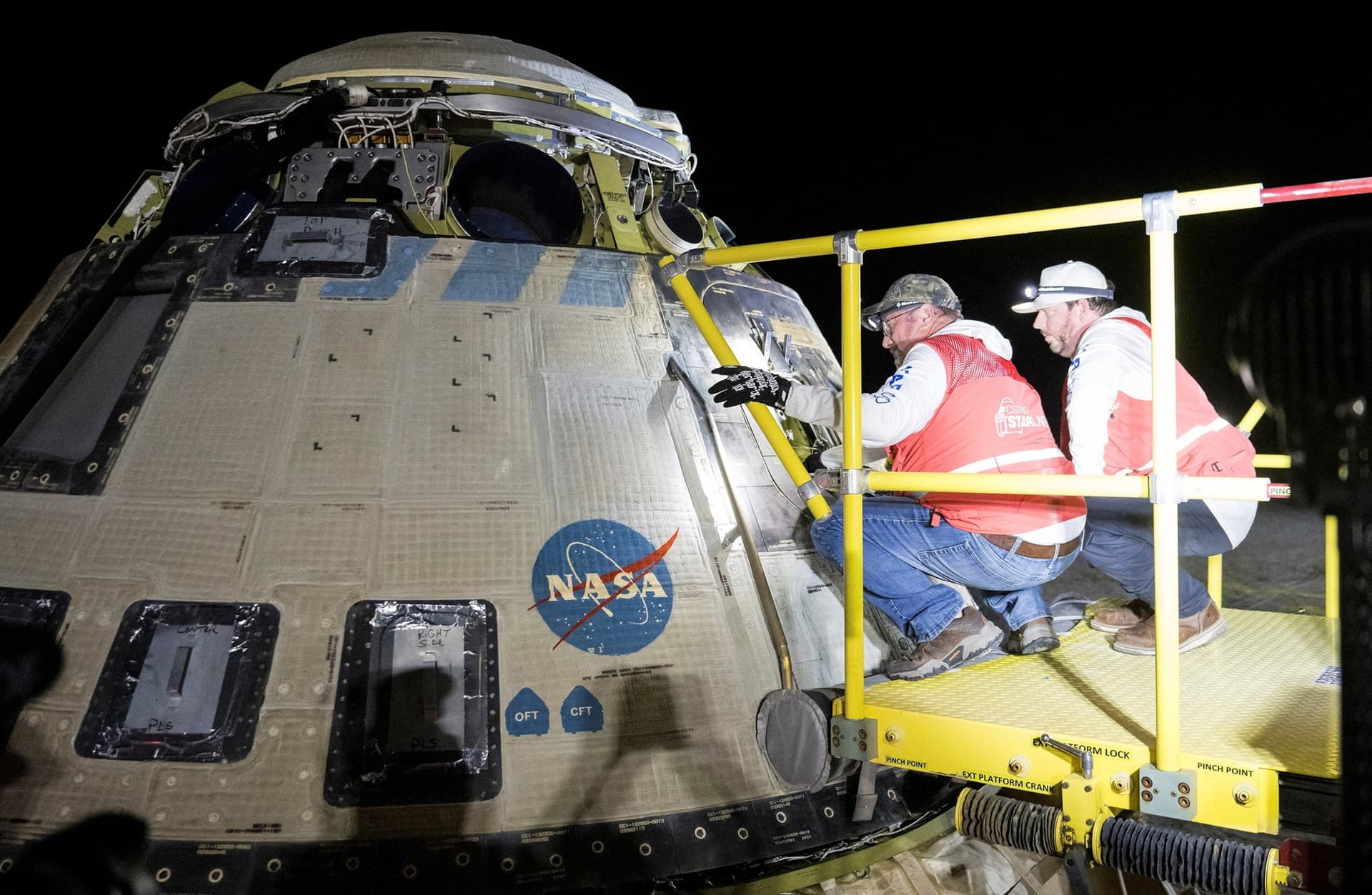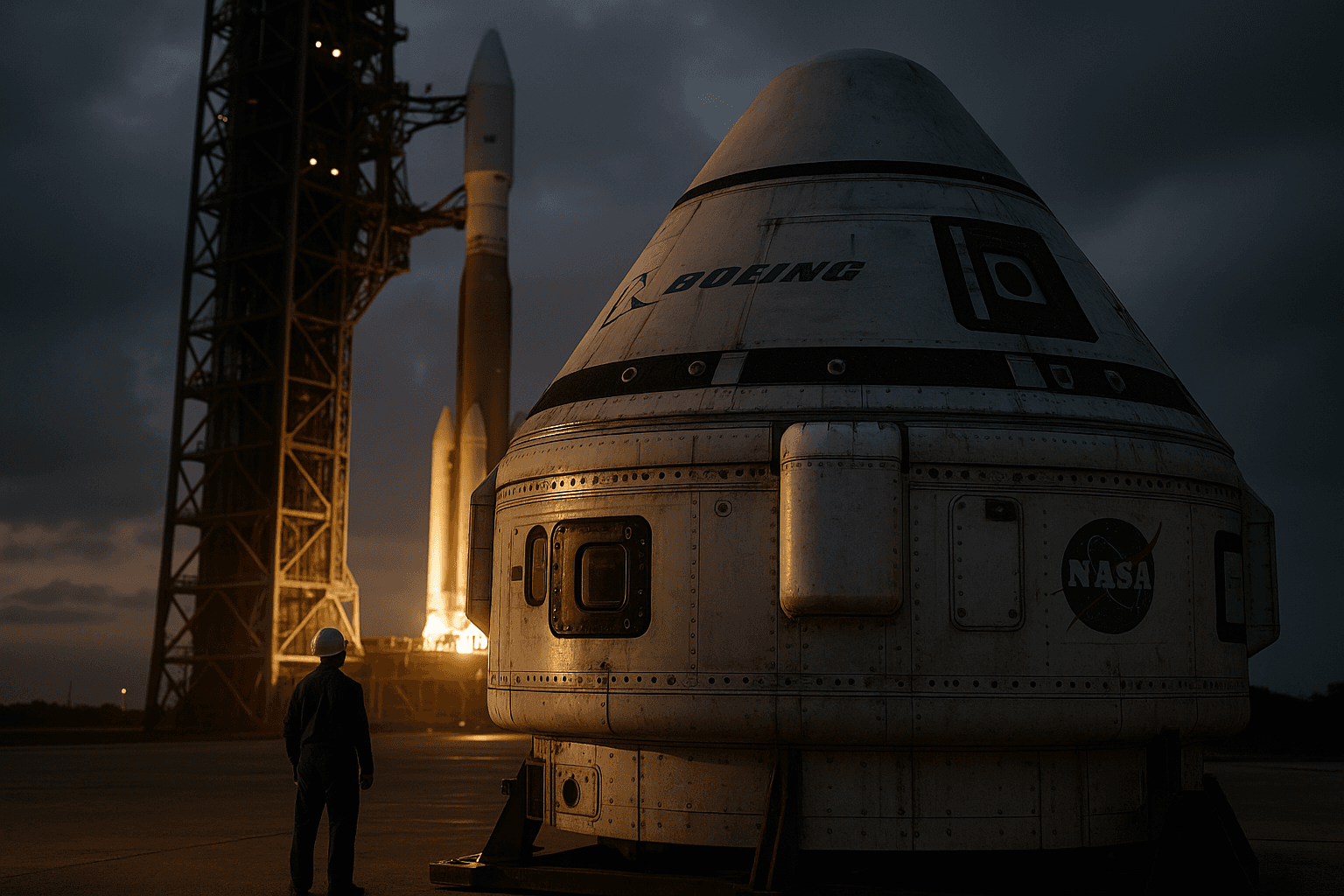NASA, Boeing Reduce Starliner Crew Flights, Next Mission Uncrewed
NASA and Boeing agreed to modify the Starliner contract, shrinking the number of guaranteed astronaut flights and converting the next mission to an uncrewed cargo and test flight slated for April 2026. The move follows propulsion and thruster problems during Starliner’s first crewed test, and aims to buy time for further safety testing while preserving independent U.S. crew access to the International Space Station.

NASA and Boeing announced on November 24 that they have agreed to revise the contractor terms for the CST 100 Starliner program, reducing the number of guaranteed astronaut carrying flights and changing the schedule for the next mission. Under the modified agreement the contract will guarantee four astronaut carrying flights rather than six, and up to three of those will be crewed missions. The flight previously planned to carry astronauts will instead be converted to an uncrewed cargo and systems test mission, targeted for April 2026.
The change follows a troubled first crewed test flight in which propulsion and thruster anomalies forced NASA astronauts to remain aboard the International Space Station significantly longer than planned. NASA said the contract modification reduces its value by about $768 million and affords Boeing and the agency time and funding to carry out additional testing and certification work with a focus on safety.
The decision reflects a careful balancing of program goals, technical risk and national priorities. NASA emphasized that it remains committed to maintaining two independent U.S. crew access options to the station while ensuring that any flight carrying astronauts meets the agency’s safety and certification standards. Practical consequences include a temporary shift of crew rotation planning and a heavier near term reliance on the other U.S. commercial crew provider to sustain regular station operations.
Boeing reiterated its commitment to the Starliner program and to resolving the technical issues that emerged during the earlier crewed test. The company will use the additional time to complete propulsion and thruster troubleshooting, expand ground and flight testing and pursue the certification steps NASA requires before resuming crewed missions.

Industry analysts say the move is likely to extend the timeline for Starliner to begin regular operational crew rotations, although converting the next mission to uncrewed status is intended to reduce near term risk while still advancing verification of the spacecraft’s systems in a realistic orbital environment. The additional testing and certification work funded by the contract modification will be billed as an investment in reducing the probability of in flight anomalies on future crewed flights.
For NASA the tradeoff underscores the agency’s dual objectives of maintaining continuous human access to low Earth orbit and insisting on robust safety margins for astronauts. For Boeing the revised schedule and reduced guaranteed crew flights represent both a financial hit and an opportunity to demonstrate corrective action. The April 2026 uncrewed mission will be one of the clearest near term indicators of whether the company has successfully addressed the propulsion and thruster shortcomings that prompted the change.
As work proceeds there will be close scrutiny from NASA, Congress and international partners about cost, schedule and confidence in American commercial crew capabilities. The agency and Boeing face the immediate task of finishing the additional testing and certification steps without further delays, while ensuring the next time Starliner carries astronauts it does so with proven reliability.


